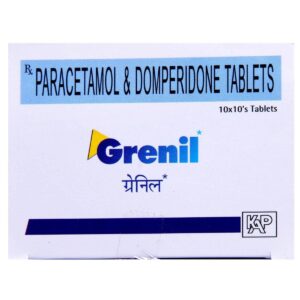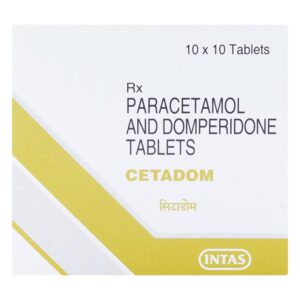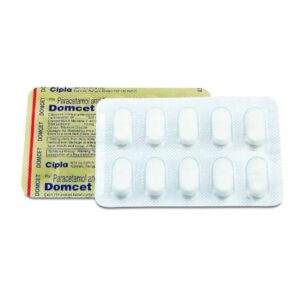PARACETAMOL (ACETAMENOPHEN) + DOMPERIDONE
Paracetamol (acetamenophen): Paracetamol, also known as acetaminophen, is a commonly used over-the-counter medication for the relief of mild to moderate pain and fever. It is available in various forms such as tablets, capsules, and liquid.
The exact mechanism of action of paracetamol is not fully understood. It is believed to work by inhibiting the production of certain chemicals in the brain that are responsible for pain and fever. Unlike non-steroidal anti-inflammatory drugs (NSAIDs), paracetamol has little to no anti-inflammatory properties.
The recommended dose of paracetamol for adults is usually 325-1000 mg per dose, with a maximum daily dose of 4000 mg. For children, the dose is based on their weight and is typically lower than the adult dose. It is essential to follow the instructions on the packaging or consult a healthcare professional to determine the appropriate dosage.
While paracetamol is generally considered safe when taken in appropriate doses, it does carry the risk of potential side effects. The most common side effect is liver toxicity, especially at high doses or in individuals with liver disease. It is crucial to avoid exceeding the recommended daily dose and not to use multiple medications containing paracetamol simultaneously. Other less common side effects include skin rashes, allergic reactions, and blood disorders.
It is worth noting that paracetamol should not be used as a long-term solution for chronic pain. If symptoms persist or worsen, it is important to seek medical advice for a proper diagnosis and treatment.
Domperidone: Domperidone is a medication that is primarily used to treat gastrointestinal disorders such as nausea and vomiting. It belongs to a class of drugs called dopamine antagonists.
The primary mechanism of action of Domperidone is to block dopamine receptors in the brain and gut. By doing so, it increases the movement or contractions of the stomach and intestine, which helps to improve the symptoms of nausea and vomiting. Additionally, Domperidone also acts on the gut to decrease the sensation of fullness and improve gastric emptying, making it beneficial for conditions like gastroparesis.
The typical recommended dose of Domperidone is 10 mg taken orally three to four times a day, preferably on an empty stomach. The duration of treatment can vary depending on the condition being treated and the individual response to the medication.
While generally well-tolerated, Domperidone may cause some side effects. Common side effects include dry mouth, headache, abdominal cramps, and diarrhea. In rare cases, it may cause serious side effects such as irregular heartbeat, breast enlargement in males, and allergic reactions. It is important to consult a healthcare professional if any unexpected or severe side effects occur.
It is worth noting that Domperidone has additional uses, such as stimulating milk production in breastfeeding women. However, it is important to consult a healthcare professional before using Domperidone for this purpose, as the drug can have potential hormonal and cardiac effects. In some countries, Domperidone requires a prescription, so it is advisable to consult a healthcare professional for proper guidance and use.



